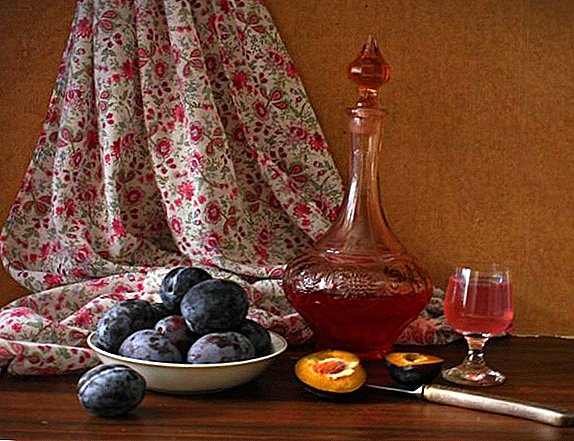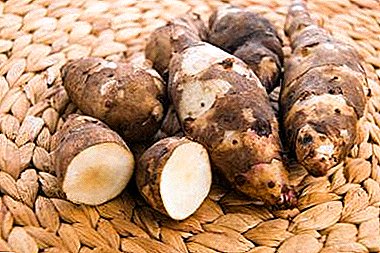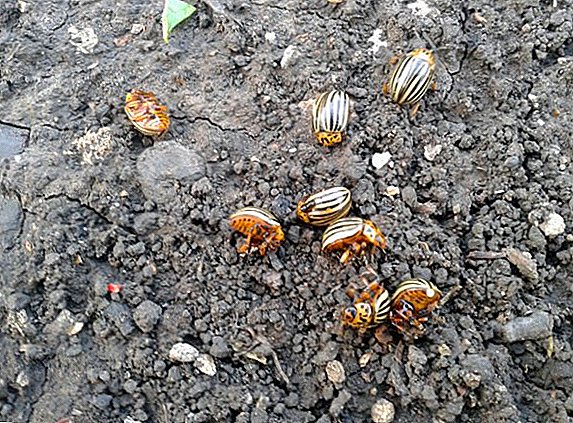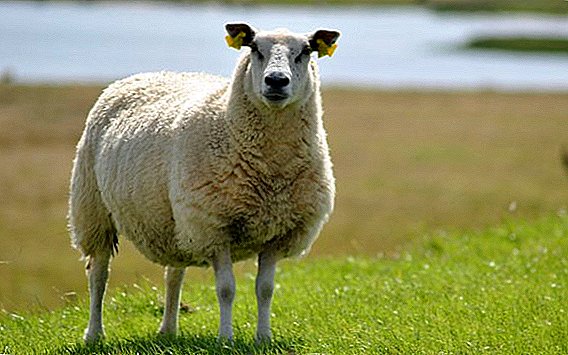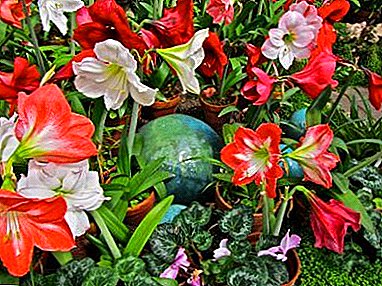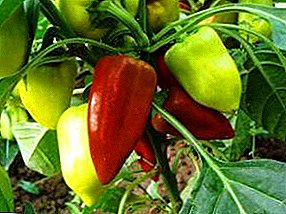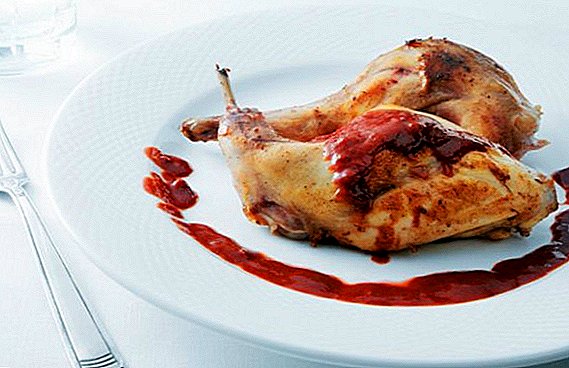 Breeding rabbits is a very profitable industry, since their fertility has already become the subject of anecdotes. One rabbit can give up to 30 rabbits per year. The cost part pays off well, and in the production they use not only meat, but also offal. Moreover, today, thanks to the promotion of healthy lifestyles and other achievements, many people have learned about the true benefits of this unique meat. Soon rabbit meat will compete with the most popular meat products - chicken and beef.
Breeding rabbits is a very profitable industry, since their fertility has already become the subject of anecdotes. One rabbit can give up to 30 rabbits per year. The cost part pays off well, and in the production they use not only meat, but also offal. Moreover, today, thanks to the promotion of healthy lifestyles and other achievements, many people have learned about the true benefits of this unique meat. Soon rabbit meat will compete with the most popular meat products - chicken and beef.
Calorie and nutritional value
100 g of rabbit meat contains 168 kcal. Meat is considered dietary and has a low fat content. For comparison - beef has 270-330 kcal per 100 g  The nutritional value:
The nutritional value:
- proteins - 21.2 g;
- fats - 11 g;
- water - 66.7 g
No carbohydrates and dietary fiber. Some diet systems (for example, the Atkins diet) just focus on low carbohydrate intake. The ratio of BZHU in rabbit meat is a proportion of 1: 0.5: 0.
The balance of biologically significant elements in 100 g of the product (the number and percentage of the norm):
vitamins:
- A (ER) - 10 μg (1.1%);
- B1 (thiamine) - 0.12 mg (8%);
- B2 (riboflavin) - 0.18 mg (10%);
- B4 (choline) - 115.6 mg (23.1%);
- B6 (pyridoxine) - 0.48 mg (24%);
- B9 (folate) - 7.7 mcg (1.9%);
- B12 (cobalamin) - 4.3 μg (143%);
- C - 0.8 mg (0.9%);
- E (alpha tocopherol, TE) - 0.5 mg (3.3%);
- PP (NE) - 11, 6 mg (58%);
- Niacin, 6.2 mg;
 macronutrients:
macronutrients:
- potassium K - 335 mg (13.4%);
- Calcium Ca - 20 mg (2%);
- magnesium Mg - 25 mg (6.3%);
- sodium Na - 57 mg (4.4%);
- sulfur S - 225 mg (22.5%);
- phosphorus Ph - 190 mg (23.8%);
- Cl Cl - 79.5 mg (3.5%);
trace elements:
- Fe iron - 3.3 mg (18.3%);
- iodine I - 5 μg (3.3%);
- cobalt Co - 16.2 µg (162%);
- Cu copper - 130 mcg (13%);
- fluorine F - 73 µg (1.8%);
- Cr chromium - 8.5 µg (17%);
- Zn Zn - 2.31 mg (19.3%).
Read also about the composition, benefits and culinary use of duck meat and guinea fowl.
Taste qualities
Rabbit meat is not only healthy, but also tasty food. Gentle and easy to prepare, it becomes a favorite with those who have tried it at least once. The color of meat is white with a pinkish tinge, thin bones and thin muscle fibers.  It has little cholesterol and purine formations. Well-fed animals have a slight fat layer, which only gives tenderness to meat.
It has little cholesterol and purine formations. Well-fed animals have a slight fat layer, which only gives tenderness to meat.
Did you know? With good care, a domestic rabbit will live a long life - about 12 years. Unlike his wild brother, who has a life expectancy of only one year.
Why is rabbit meat useful?
Based on the balance of nutrients, we can conclude that rabbit meat is rich in vitamin complex, as well as micro and macro elements.
Consider them in more detail.
- Choline is a component of lecithin and is involved in the synthesis of the liver.
- Vitamin B6 supports the immune system, is responsible for the excitation and inhibition in the central nervous system, for the metabolism of fatty compounds and polynucleotides, for the formation of red blood cells. Lack of this vitamin provokes poor appetite, anemia, and also leads to the deplorable state of the skin.
- Vitamin B12 speeds up the metabolism. Together with folate (B9) is involved in blood formation.
- Vitamin PP is needed for the reactions of oxidation and reduction in metabolism, its lack threatens with disturbances in the gastrointestinal tract and the nervous system.
- Phosphorus is a building brick for teeth and bones. Moreover, it regulates the acid-base balance and participates in energy metabolism.
- Iron is a component of enzymes, transports oxygen. Lack of it can cause fatigue.
- Cobalt is an integral part of vitamin B12 and activates the metabolism of folic acid.
- Copper is useful as a component of enzymes involved in iron metabolism. It also contributes to the enrichment of body tissues with oxygen.
- Chromium is responsible for reducing glycemia (less glucose in the blood).
- Zinc is involved in the formation of more than 300 enzymes. He is involved in the synthesis of fats, proteins and carbohydrates.
 Rabbit fat is used for medicinal purposes, and not only externally. For example, when coughing, fat is rubbed into the chest, and in acute bronchitis is taken orally. For greater effect, fat can be mixed with honey: two parts of fat per one part of honey. So the body will better assimilate the product. But if you have an individual intolerance to honey, then it is better to refrain from it.
Rabbit fat is used for medicinal purposes, and not only externally. For example, when coughing, fat is rubbed into the chest, and in acute bronchitis is taken orally. For greater effect, fat can be mixed with honey: two parts of fat per one part of honey. So the body will better assimilate the product. But if you have an individual intolerance to honey, then it is better to refrain from it.
Important! If you are absolutely contraindicated meat, then even the rabbit will have to be excluded from the diet.
Fat is also an anti-allergen and is used in the cosmetics and pharmaceutical industries - for the manufacture of creams and wound healing ointments.
Rabbit meat thanks to vitamin B12 is effective antioxidant. It has a beneficial effect on the skin and mucous membranes, keeping them in good shape.
Meat is easily digested without causing putrefactive processes in the intestines, which also refers to undoubted advantages. The meat of a young animal has the peculiarity of missing (not accumulating) salts of heavy metals and strontium-90, from which one cannot escape, because it is contained in feed.
The Soviet chinchilla, white giant, Californian, rex, butterfly, black-brown, and flandre are considered to be meat breeds of rabbits.
Can i eat
As a diet product, doctors often recommend rabbit meat to eat. It is useful for dieters, children, pregnant women, nursing moms and many other people of all ages. In renal failure, it is recommended to pay attention to the use rabbit liver. People who have a history of cancer diagnosis, it is useful to use rabbit as a product that lowers the level of radiation.  On the part of the cardiovascular system, rabbit meat can be called a product that guards hypertension and atherosclerosis.
On the part of the cardiovascular system, rabbit meat can be called a product that guards hypertension and atherosclerosis.
During pregnancy
Women who have a child need a lot of nutrients, normalizing the work of the body as a whole. This effect gives rabbit meat, so along with beef it is recommended to add it to the diet of pregnant women.
Breastfeeding
Since rabbit meat hypoallergenic and easy to digest, then it will not harm either the nursing mother or the baby. Rather, on the contrary, it will enrich the growing organism with vitamins and elements that are useful for growth and development. The main thing - do not overdo it. No matter how useful the product is, everything needs measure. Watch the baby’s reaction, and if he doesn’t have an individual intolerance through milk, it means that soon rabbit meat will get into the food one of the first.
Important! Rabbit meat in rare cases provokes neuroarthric diathesis in children younger than a year. Before introducing it to the supplement, be sure to consult your pediatrician.
When losing weight
Nutritionists love rabbit meat because it normalizes fat metabolism and when properly consumed satiates the body without leading to obesity. Also, this product copes with the organization of a suitable balance of nutrients in the human body. By the amount of protein rabbit is ahead of not only lamb and beef, but even pork, despite the fact that there is almost no fat. And the insignificant amount of fat that can be present in an adult carcass is rich in rare arachidonic acid, beneficial to the body. 
With diabetes
Since rabbit meat regulates the amount of glucose in the blood, diabetics definitely should not give up this valuable product.
With pancreatitis, gastritis
Rabbit meat has a beneficial effect on the functioning of the gastrointestinal tract, it is recommended for stomach ulcers, various intestinal diseases, gastritis, liver and kidney diseases, and pancreatitis. Of course, the product must be boiled and consumed in moderation.
Gout
Let the content of nitrogenous substances and not great in rabbit, yet their presence has to be taken into account. These substances provoke hyperuricemia, getting into the human body. Thus, acid (uric) accumulates in the joints, which worsens their condition and can provoke arthritis. For this reason, patients with gout is not recommended to use rabbit.
Learn how to score a rabbit and how skins are dressed at home.
How to use in cooking
White rabbit meat deservedly belongs to gourmet products, which affects its value. But, given its benefits and advantages over the rest of the meat range, you only benefit from the acquisition of rabbit meat and cooking dishes from it.
What can you cook
Having divided the rabbit's carcass, you can divide the parts into categories of dishes. For example, the front part will be an excellent base for soups, and the back is suitable for stewing, baking or simple roasting.
Roast rabbit, rabbit meatballs and meatballs, braised rabbit meat with sauce or in own juice, rabbit fricassee, stew with the addition of various vegetables, tender pastes, rabbit marinade, zrazy, chops - this is not a complete list of dishes from this unique meat. 
What is combined
Rabbit meat is unique in that it goes well with a variety of products (including other types of meat). A variety of dishes gives space to any, the most daring culinary fantasy. Moreover, neither the taste nor the nutritional value of this product does not lose, being smoked, salted or canned.
Did you know? Due to the nutritional properties of the mother's milk, the little rabbit doubles its weight at the age of 6 days. For example, a pig copes with this task only at the age of two weeks.
It is believed that the best dish is rabbit meat in sauce. Pieces stewed in berry syrup or in a creamy garlic mixture. The taste is delicate and refined, the sauces set off the tender meat and enrich its taste palette.  In different cultures, rabbit meat has received its own individual culinary characteristics. The French love the rabbit stew with truffles, sometimes adding game ingredients to these ingredients. They also prepare exquisite pies of meat stewed in cream.
In different cultures, rabbit meat has received its own individual culinary characteristics. The French love the rabbit stew with truffles, sometimes adding game ingredients to these ingredients. They also prepare exquisite pies of meat stewed in cream.  Italians know that with Provence herbs and olives, the rabbit is especially spicy and tasty, in a pinch, it can always be stuffed with chanterelles and baked.
Italians know that with Provence herbs and olives, the rabbit is especially spicy and tasty, in a pinch, it can always be stuffed with chanterelles and baked.
Read also about chanterelles: where they grow and how to collect, medicinal properties, freezing, pickling for the winter.
Bulgarians, as true adherents of bright tastes, prepare a rabbit with apples and nuts. Poles prefer grilled crust, so they pickle meat in mustard, and then bake it in the oven.  Rabbit goes well with all varieties of pepper (black, red, white) and its mixtures. With it you can add ginger, rosemary, basil, celery, olives and, of course, garlic. All these spices give the meat its own special taste, so do not be afraid to experiment.
Rabbit goes well with all varieties of pepper (black, red, white) and its mixtures. With it you can add ginger, rosemary, basil, celery, olives and, of course, garlic. All these spices give the meat its own special taste, so do not be afraid to experiment. 
Cooking secrets
- Some cookbooks recommend steeping rabbit meat before cooking for 6 or even 12 hours. Soaking is carried out in cold water, changing it during this time several times.
- If the meat is chopped, and not scrolled in a meat grinder, then the dish will be softer. Rolls or chops of minced rabbit meat often become a real decoration of the festive table.
- A rabbit flavored with orange or mango is also perfect for a festive meal.
- Strengthen the taste of the rabbit, you can use the marinade. Soak the meat in wine vinegar, in the juice of ripe lemon, finally, just in wine. Juicy notes can be achieved by soaking it in brandy or brandy (no longer than a quarter of an hour).
- Even a small amount of fat from the carcass is better to remove. It is useful later, for example, in the preparation of vegetable dishes or for frying potatoes.
- If you want to enhance the taste of other meat (pork, lamb) with the help of a rabbit, then do not forget to let the paired rabbit lie down in a cool area for about ten hours, and only then proceed to cooking.

How to choose when buying
The most valuable is a young animal of three to five months. A rabbit carcass weighing more than 1.5 kg is already causing concern that the animal is not too old and that the meat will not be tough.
Meat should be light, slightly pinkish or even pale pink. The richer the shade, the older the rabbit. Avoid rabbit bruises and broken bones.
Important! Do not buy gray meat. This is a sure sign of imminent decomposition.
There is a practice in which the rabbit carcass is sold with one fur (with skin) paw or tail. This has been the case since when ordinary cats were sold in the market under the guise of a rabbit.
In the market, the sanitary service monitors the quality of products, so pay attention to whether there is a corresponding seal on the carcass. There should be no smell, fresh rabbit meat smells of nothing, when pressed elastic. 
How to store at home
It is best to prepare rabbit meat immediately after a brief cooling. In the refrigerator at a temperature of from zero to two degrees, the meat will retain freshness for 4 days. If you still took the product in reserve and froze, then do not hold it for longer than six months - cook and eat.
Learn more about breeding rabbits: feeding (what kind of grass is eaten, harvesting hay, winter ration); rabbit disease; care during the molting period; making cages, sheds and feeders; decorative, fur and downy breeds of rabbits.
When is it better to give up
The amino acids with which rabbit meat is so rich make the body environment more acidic. The fact is that in the intestine, they are transformed into hydrocyanic acid. In some diseases of the gastrointestinal tract, this fact must be taken into account. It has been said above about purine bases and their influence - regular high consumption of rabbit meat can cause development arthritis or gout.
Nothing more can be said about rabbit meat, this meat is tasty and healthy, it is cooked even for small children.
Video recipes
Fricassee
Parfait
Rabbit in a creamy mustard sauce
Rabbit stew
Rabbit meat: reviews
Denim
Before cooking, soak the rabbit for 3-4 hours in water or milk ... Fry the rabbit pieces in vegetable oil, pepper, salt, put in a saucepan, sprinkle with roasted onions, pour with low-fat sour cream and put in a preheated oven, simmer for 1 hour ...

1 medium rabbit, 2 tbsp. spoon mustard, 1/2 cup of white wine, 4 tbsp. spoons of cream, salt, pepper, spices as desired
Rabbit cut into 3 parts. Fold in a baking dish. Pour wine, salt, pepper, spread with mustard. Pour the cream on top. Close with foil. Put in the oven at 220 ° C for 40 minutes, remove the foil, leave the rabbit in the oven until golden brown.

Only in your hands care about your own health, so do not deny yourself the right products. Let rabbit meat not be a regular guest at your table, but this is not required. The main thing - at least sometimes include it in the diet to maintain the balance of nutrients in the body.


